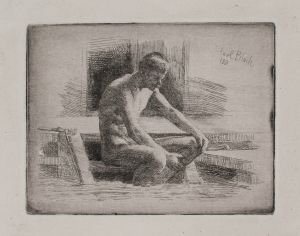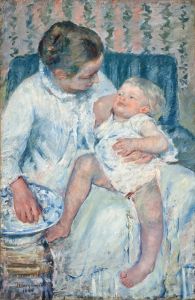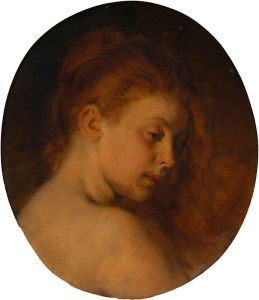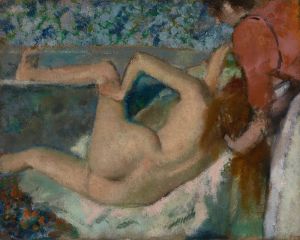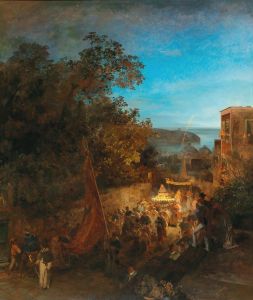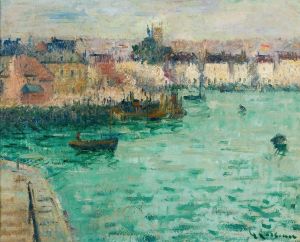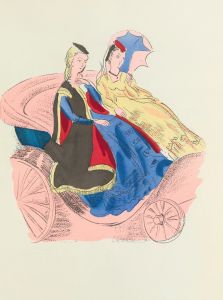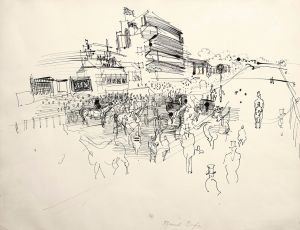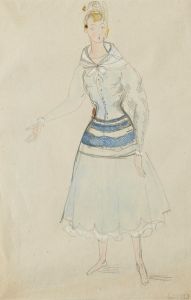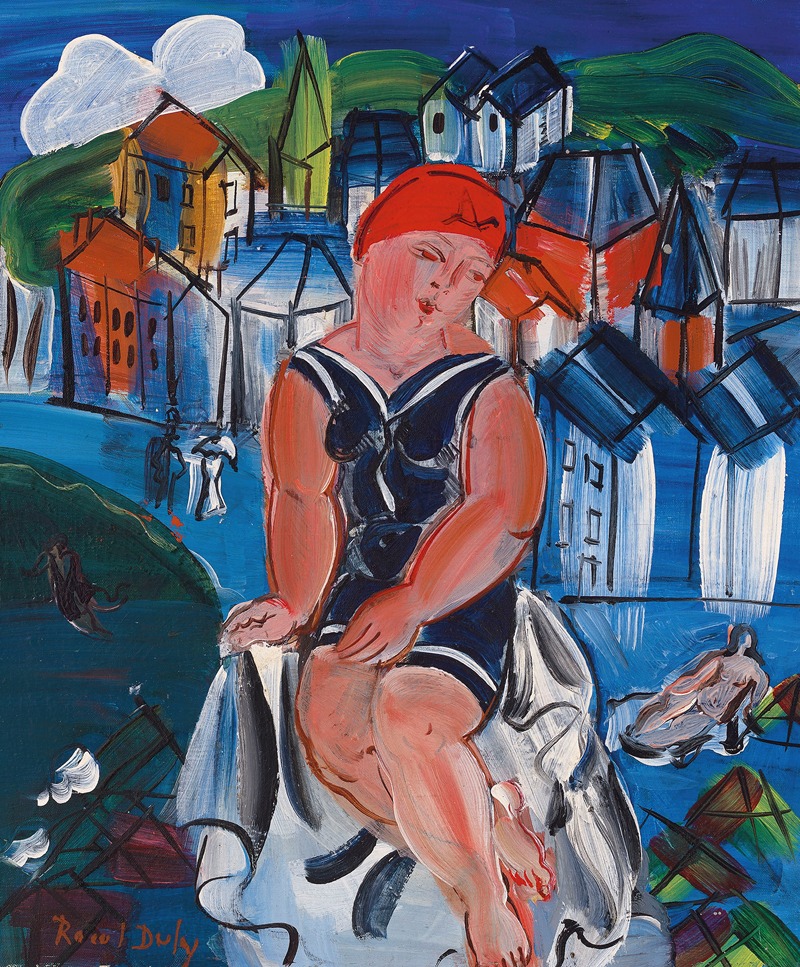
Petite baigneuse à Sainte-Adresse
A hand-painted replica of Raoul Dufy’s masterpiece Petite baigneuse à Sainte-Adresse, meticulously crafted by professional artists to capture the true essence of the original. Each piece is created with museum-quality canvas and rare mineral pigments, carefully painted by experienced artists with delicate brushstrokes and rich, layered colors to perfectly recreate the texture of the original artwork. Unlike machine-printed reproductions, this hand-painted version brings the painting to life, infused with the artist’s emotions and skill in every stroke. Whether for personal collection or home decoration, it instantly elevates the artistic atmosphere of any space.
"Petite baigneuse à Sainte-Adresse" is a painting by the French Fauvist artist Raoul Dufy, known for his colorful and decorative style that often depicted leisure activities and coastal scenes. Dufy was born on June 3, 1877, in Le Havre, France, and became a prominent figure in the Fauvist movement, which emphasized painterly qualities and strong color over representational or realistic values.
The painting "Petite baigneuse à Sainte-Adresse" translates to "Little Bather at Sainte-Adresse." Sainte-Adresse is a commune in the Normandy region of France, near Le Havre, which was a frequent subject in Dufy's work due to its picturesque coastal scenery. This location was not only significant to Dufy personally, as it was near his birthplace, but it also held artistic importance as a popular destination for Impressionist painters, including Claude Monet.
Dufy's work is characterized by its vibrant color palette and fluid brushwork, and "Petite baigneuse à Sainte-Adresse" exemplifies these traits. The painting likely captures a scene of leisure, a common theme in Dufy's oeuvre, reflecting the joy and vibrancy of life by the sea. His use of color and light creates a sense of movement and spontaneity, inviting viewers to experience the carefree atmosphere of the beach.
Throughout his career, Dufy was influenced by several artistic movements and figures. Initially inspired by the Impressionists, he later embraced Fauvism after being influenced by Henri Matisse. Fauvism, which emerged in the early 20th century, was characterized by its bold use of color and brushwork, and Dufy became one of its leading proponents. His style evolved over time, incorporating elements of Cubism and other modernist trends, but he remained committed to capturing the essence of his subjects through color and form.
Dufy's paintings often depict scenes of regattas, concerts, and other social gatherings, reflecting the joie de vivre of the early 20th century. "Petite baigneuse à Sainte-Adresse" fits within this context, as it portrays a moment of leisure and enjoyment. The painting's composition and use of color demonstrate Dufy's ability to convey the atmosphere of a scene with minimal detail, focusing instead on the emotional and sensory experience.
Raoul Dufy's contribution to modern art extends beyond painting; he was also a successful textile designer and illustrator. His work in these fields further demonstrates his mastery of color and pattern, which he applied across various media. Despite facing challenges later in life, including rheumatoid arthritis, Dufy continued to create art until his death on March 23, 1953.
"Petite baigneuse à Sainte-Adresse" remains an example of Dufy's unique artistic vision, capturing the beauty and vibrancy of coastal France. His work continues to be celebrated for its joyful expression and innovative use of color, securing his legacy as a significant figure in the history of modern art.





